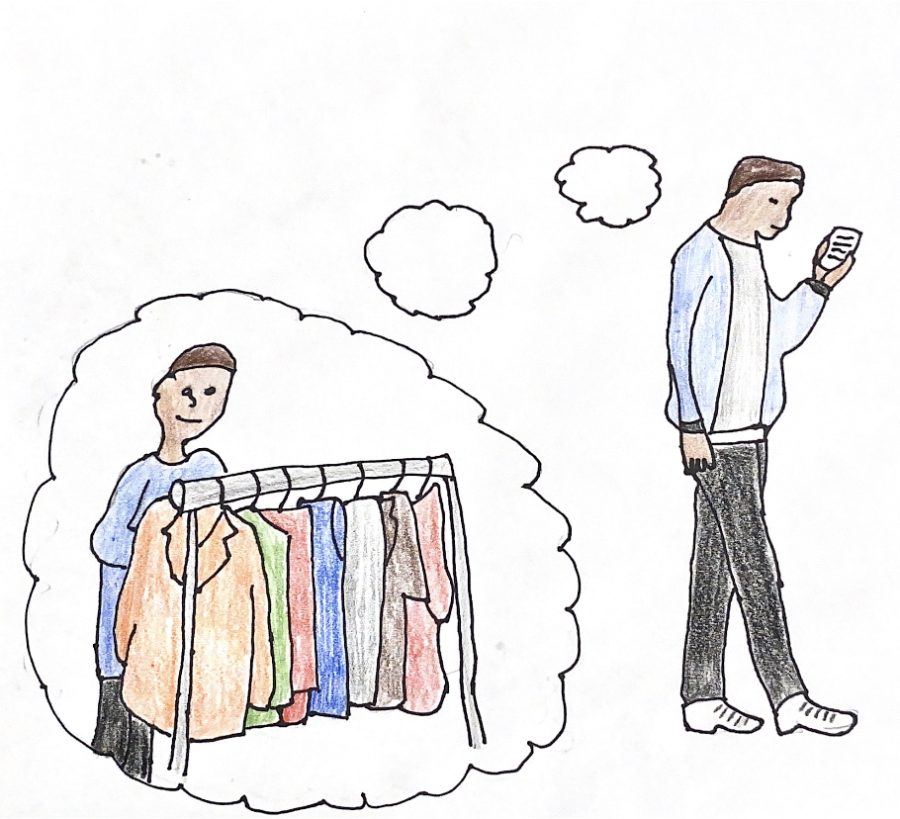Over consumption damages environment, mental health
Overconsumption is becoming an issue among high schoolers and social media is partly to blame.
March 1, 2023
Social media has taken shopping and turned it into an even bigger problem for many users. Along with the constant stream of information that comes from social media, comes influencers and everyday people telling consumers that they “just have to have” a certain product. These products create waste, cost consumers money and are creating a toxic mindset for consumers.
Scrolling through social media nowadays is impossible without being constantly told to buy new clothes, a new makeup product, or some revolutionary new skin care product. Instead of buying a new product once the old one runs out, people are buying new products when they already own perfectly good products. This creates an excessive amount of things that people own. A typical makeup or skincare product has a shelf life of around six months once opened. Once these six months have passed, the product is no longer usable and may grow mold or be harmful to the user’s skin. The product then must be thrown out. If a consumer uses one product on a regular basis and gets through the entire bottle, then the product is able to be used as intended. It does not create any excess waste besides the bottle or tube that it came in. Constantly buying multiple products that all do the same thing, however, will cause multiple bottles plus the product inside to go to waste.
Makeup and skincare products are not the only things contributing to landfill waste. Constantly changing fashion trends are also causing excessive waste. Instead of purchasing clothing items that they know are going to last and be a good, quality product for multiple years, consumers will purchase items off of platforms like SHEIN or Zara that will be trendy and cute for a moment, and then phase out. Once these products are no longer considered in trend, they will either be thrown out or sitting on a shelf at thrift stores. “Of the 100 billion garments produced each year, 92 million tonnes end up in landfills. To put things in perspective, this means that the equivalent of a rubbish truck full of clothes ends up on landfill sites every second,” Earth.org writer Martina Igini said. Not only do these products constantly change within trends, they are also cheaply made in poor working conditions. These cheap products create more waste and do not last in the long run.
Overconsumption is also leading people to spend unnecessary money. If a consumer already has a product, buying a similar product is simply a waste of money. In a day and age where the cost of products is continuing to rise and the amount of money that employees are taking home is decreasing, should they really be spending all of their money on products that they already have?
The mindset of constantly needing to buy more things is becoming toxic for the average consumer. The big celebrities and brands can afford to constantly throw new products into consumers’ faces, but it comes with a mental toll for the customers. A feeling of FOMO or fear of missing out can overcome a person when they feel like they do not have the newest and greatest product. The hit of dopamine that a person gets when they buy a new product causes them to consume more and more to feel this sensation. Eventually, these hits of dopamine no longer come after purchasing a new product and then all the consumer is left with is a ton of meaningless products and empty pockets.
Over consumption is creating many serious problems. It is causing more waste to end up in landfills, less money in peoples’ pockets, and it is not helping people to feel fulfilled. Instead of purchasing an item on an impulse, consumers should instead think about if they already own a product of similar use. They should also take into account the cost and if they think that the product will still be useful to them a year from now. Over consumption will continue to cause issues if consumers continue to mindlessly purchase products.
Read more about how fast fashion is contributing to landfill waste, here.











